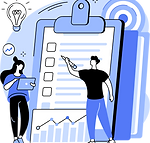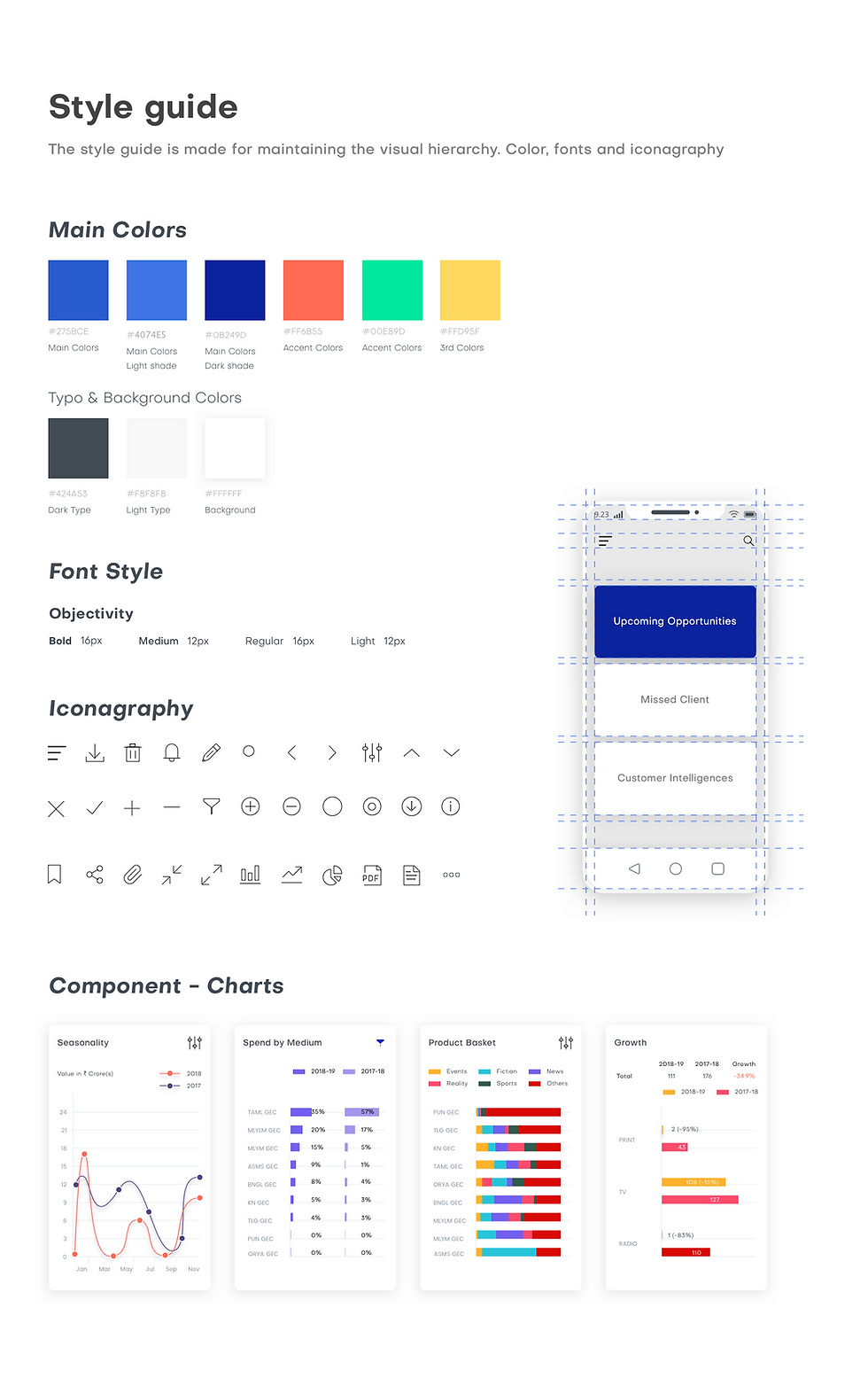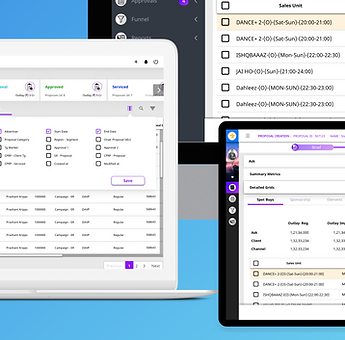How might we make predictive lead super easy and accessible to all the salespeople?
Building an intelligent prospecting and pitching tool for sales teams to overcome their lead generation problem.

01.
The Summary
Backstory
ABP (Anandabazar Patrika)
Client Details
6 months (From July 1st, 2017 - till Dec end 2017)
Time Duration
iOS & Android
For Mediums
Design Research, Interaction Design, & Visual Design
My Role
Rohit Jaiswal (BA)
Piyush Gupta (PM)
Shaban Mohammad (VD)
Raghvendra Singh (UX)
Vipin Verma (Tech Lead)
Ashutosh Vyas (Data Scientist)
Team Setup
ABP News is an Indian Hindi news channel owned by ABP Group. It is a free-to-air TV channel founded in 1998. It was formerly known as STAR News before being acquired by ABP Group.
Sister channels: ABP Ananda (Bengali); ABP Asmita (Gujarati); ABP Majha (Marathi); ABP Sanjha (Punjabi); ABP Ganga (UP); ABP Live
About Project
During five months, I looked at the different platforms and resources from where the lead can be trigger and conversion can happen.
The prominent problem sales representatives face was scattered data published on various platforms and how to make an informed decision to convert into a promising lead for a business.
We are internally creating an optimizer that can help in predicting lead from a given data. So to test this optimizer, we are preparing sample data from various print and tv ads as test runs for our optimizer. After running several rounds of trial and error, we crack this and started to use it for our new Satchet product for ABP news.
In this case study, I would like to provide a sneak peek into the design process we followed. I have tried to cover all the broader methods for better understanding. But if there's anything that you need more clarification on, do reach out to me.
02
The Overview
Project Basics
A. Role, Deliverable & Team Structure

My contribution included User interface, User Research, and Interactive Prototype. I managed one designer team of 1 designer, one front-end developer, engaged with the business team for validation and design input. Below is the team structure in which I worked
B. Business Objectives
To design industry first, personalized sales prospecting and pitching tool for media ad sales.


C. Problem Definition

-
Ad hoc (unstructured and heuristic-based, largely basis inputs from agencies

-
Noncomprehensive (do not cover all mediums, only basis past spends, limited view on future

-
Little knowledge on customer (Sales executive lacks in-depth know-how about client's media spends
03
The Impact
Success Metrics
Here are a few metrics which are in comparison to 5 months old sale representative search patterns:
-
10-15 % increase in revenue
-
The number of new client onboarding happens based on the lead generated by the optimizer, and income increased by 30%
-
Market campaign share of 60% also increased due to more clients in the portfolio.
-
90% Lesser time in searching for leads on the web.

04.
Customer Input
Research Process
Project Immersion
User Stories
User Persona
Brainstorming
User Interviews

Define, Ideate & Delivery
Information Architecture
Wireframes
Visual Design
Prototype

Future & Beyond
Key Takeaways
Concept Propagation

Business Alignment
Market Study
Research Interviews
Project Immersion
Iteration
Define, Ideate & Deliver
Design Directions
Design & Validate
User interviews and online research to come up with a concrete set of findings. And along the iterative process, there were many situations where we consulted users to validate the designs. To make the case study leaner, I have excluded it from this case study.
Storyboarding
User journey of a saleperson
Let's understand what is our salesperson going through?

05.
Key Information Opportunities
Research Findings
User interviews and online research to come up with a concrete set of findings. And along the iterative process, there were many situations where we consulted users to validate the designs. To make the case study leaner, I have excluded it from this case study.
5.1 - User Feedback
We have gathered some existing users feedbacks from their daily routine for understanding user needs
Track record all the upcoming opportunities, regularly publishing on a different platform that can be a new conversion opportunity.
Daily Routine
Weekly check-in on all the missed clients who advertise on any platform can be a promising lead. Prepare a list to prioritize all of the missed clients for the coming week for targeting.
Weekly Routine
Every month, he needs to check if it's special days to prioritize target clients for topical campaign opportunities.
Monthly Routine
Use the advertiser intelligence module to understand advertiser spend pattern, their market share and identify pitch points.
Client Meeting
5.2 - Lead Sources examples

5.3 - Pain Point of the User

5.4 - User Persona

5.5 - Defining Product Feature

5.6 - Information Architecture


06.
Bringing It All Together
Final Outcome
There were multiple sketches, visual design, and prototypes did along the way. Below I'll be showing few primary directions undertaken. The process we followed was pretty straightforward. Once we were comfortable with the sketches and got buy-ins from all the stakeholders, we would create an Invision prototype which also works as a wireframe. These were the quickest ways to explore some design issues. After the prototypes, we would take them to sketch and create the final visual designs.


07.
Last Thoughts
Takeaways
-
Leadership & Self-belief: One of the things I learned working on multiple projects at Sagacito was coordinating with juniors and boosting self-belief. As the team was small, we had the sole responsibility of handling a part of the project compared to my older organization. Instead of contemplating whether the product will work or not, I took full responsibility to run it live and learn from its failure.
-
Multitasking & Managing work pressure: There were many days to go for User interview and market research in the morning, come back, create wireframes in the afternoon, and later work on the Visual Designs. The whole process of juggling multiple roles and responsibilities taught me a valuable lesson. It has helped me to deal with work pressure more efficiently.
-
Learning new skills: Because the environment was agile and both Designers and Engineers used to sit together, I learned many technical skills that are still useful.
-
Taking Risks: In many situations, we had very little data to back some design decisions. And because of manpower and time crunch, we had to take calculated risks. The whole process of deciding situations like this has enhanced my ability to trust my instincts.



